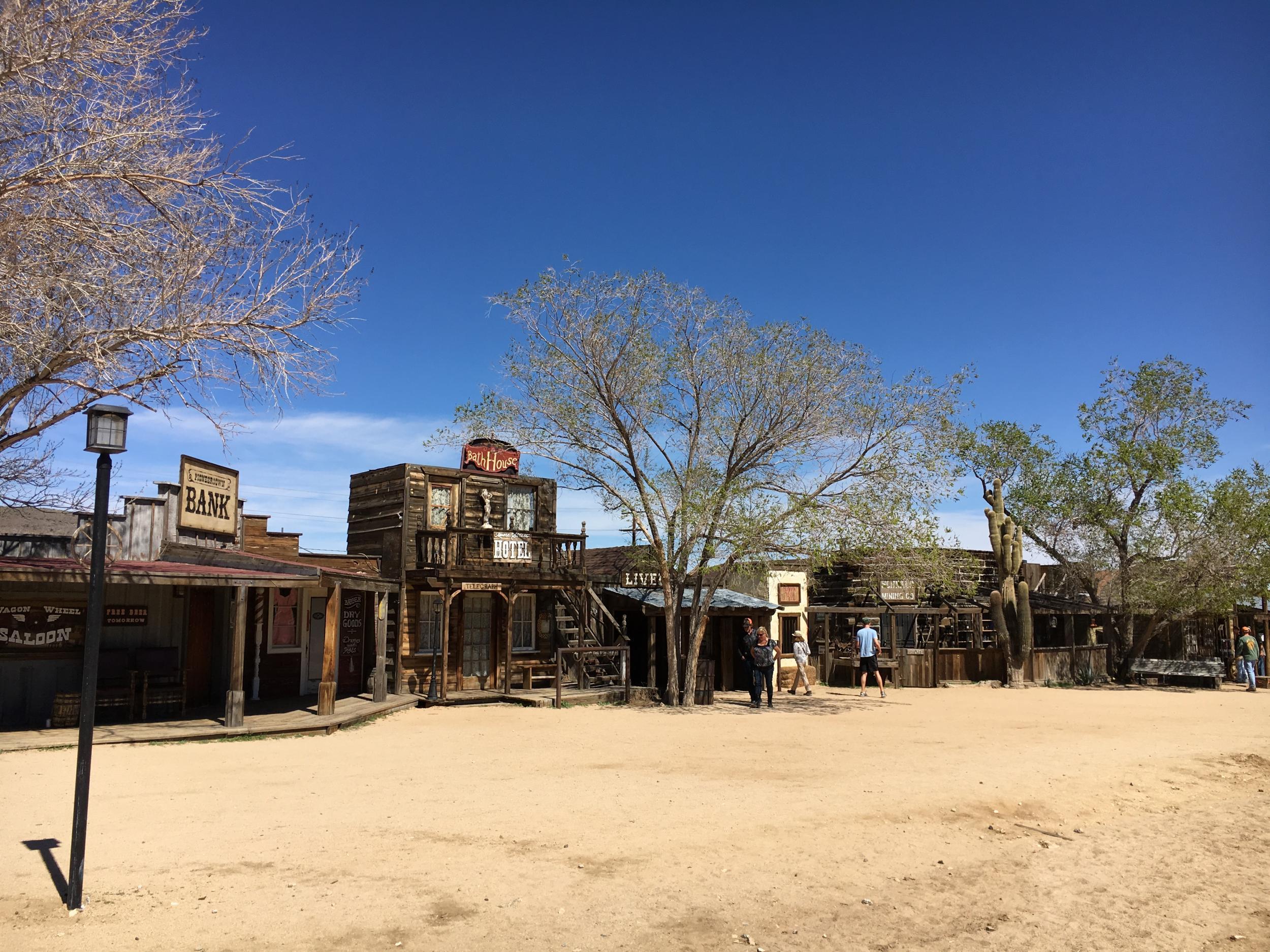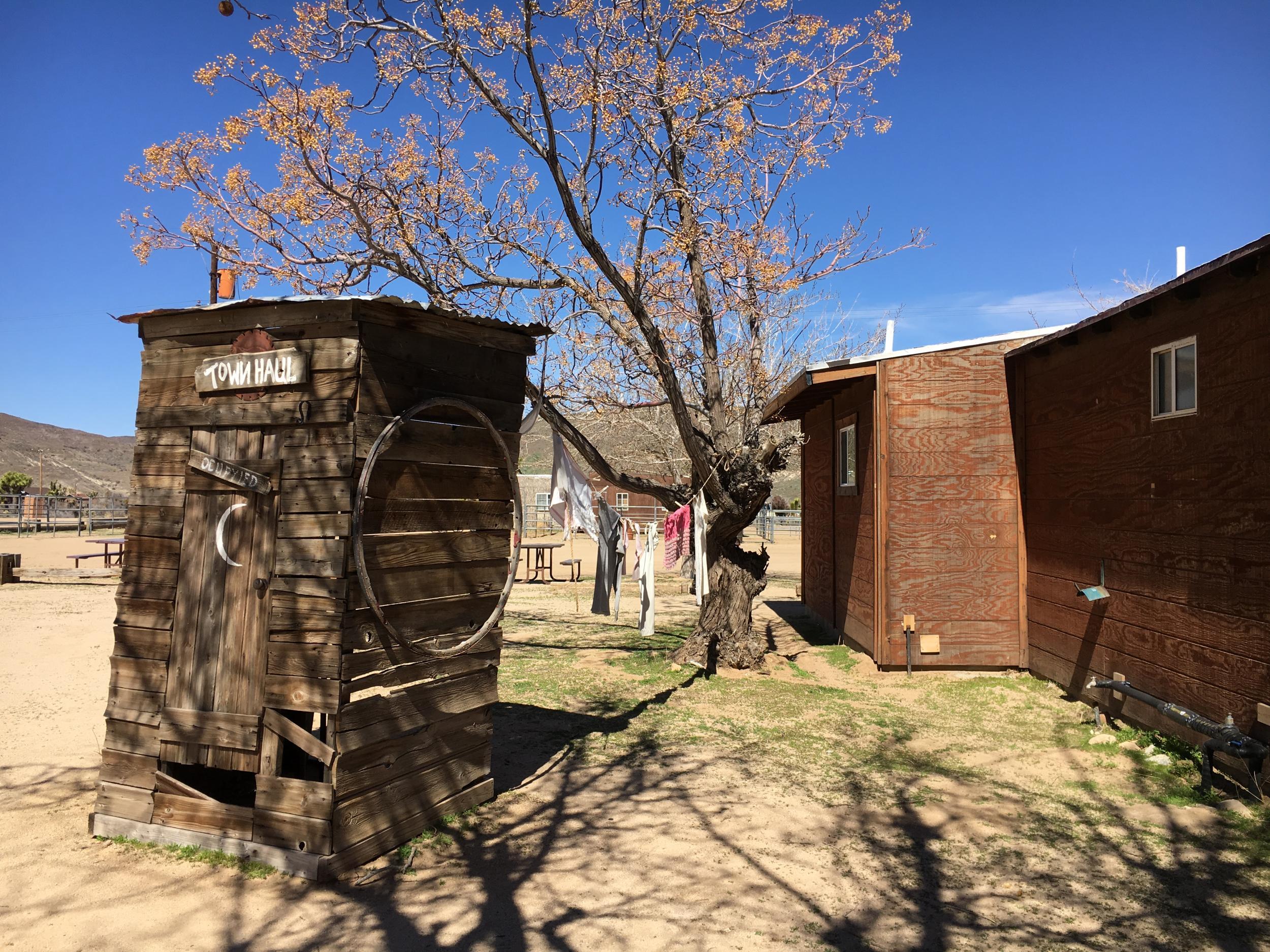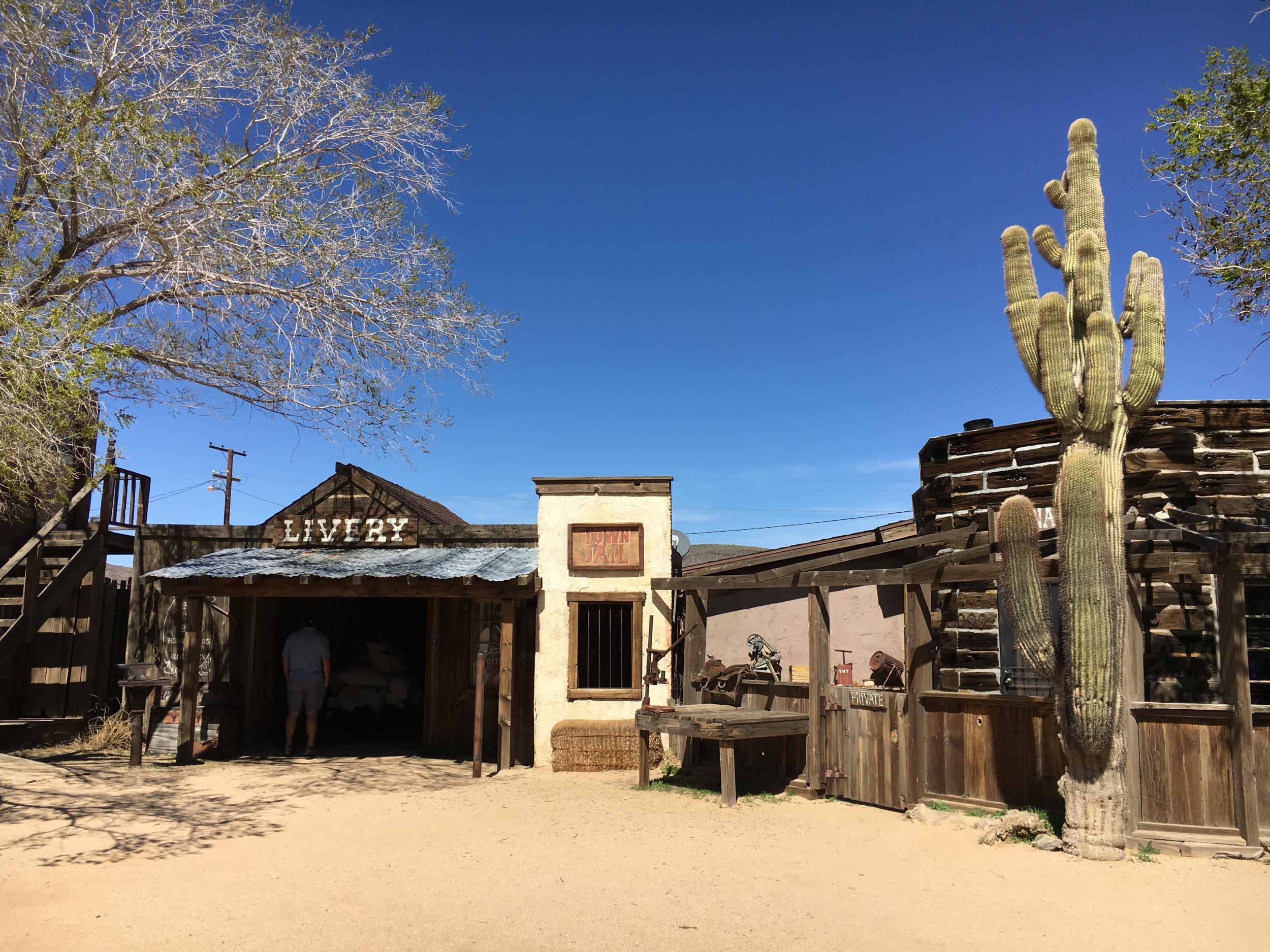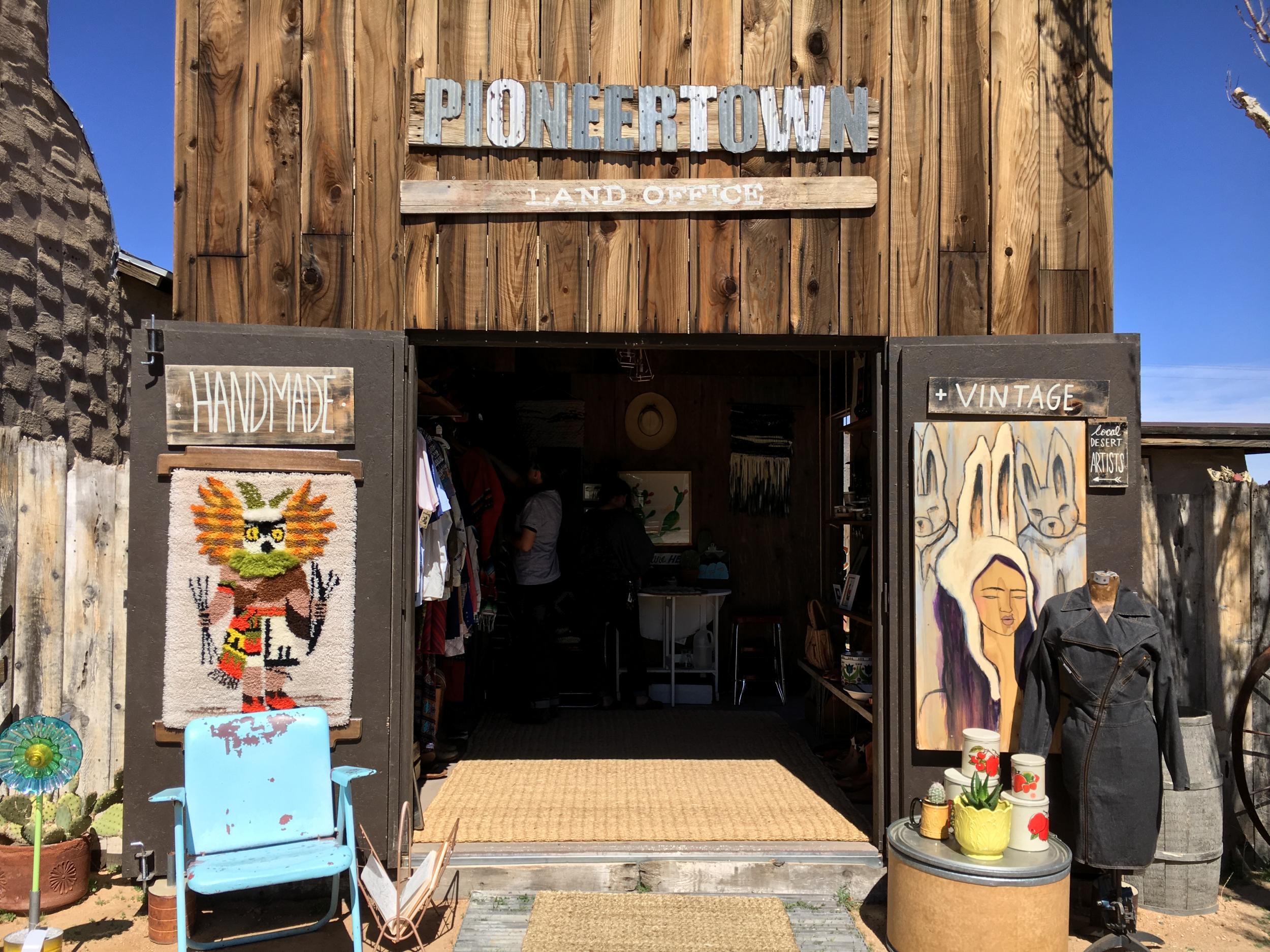The Independent's journalism is supported by our readers. When you purchase through links on our site, we may earn commission.
Pioneertown: The weird Western set in the California desert
It was built in the middle of the desert as a Wild West film set, only one you can live in. No wonder the hipsters are migrating to Pioneertown, says Breena Kerr

Pioneertown, California is a surreal place. Its history does not follow a normal narrative. Built as a film set in the 1940s by Hollywood moviemakers, its main feature is a four-block-long “Mane Street” (as opposed to America’s more usual Main Streets) with spaghetti western-style edifices built at two-thirds scale, set back on a wide, dusty road.
There’s just one catch – unlike other film sets, where you knock on “walls” to find they’re papier maché, Pioneertown was built to double as a real, living town. Just one that looks like it’s located in the Wild West. No wonder the hipsters are moving in.
In the middle of the Mojave Desert, above Palm Springs and near Joshua Tree, the 40-degree heat in warmer months makes this place unlivable for some. Then again, so does the absence of most modern amenities – there’s no supermarket or pharmacy here. Pioneertown has a single restaurant, which mostly caters to out-of-towners. So for those who come – and stay – living here is often a response to an ineffable calling.

As a result, the town’s demographics are split in two: the old-timers who came before Pioneertown started becoming a trendy weekend stop, and the young upstarts who have recognised both a haven and business opportunity in the growing tourist destination. Perhaps it’s the hostility of the desert, with its many prickly plants and animals – cacti, scorpions and snakes, to name a few – that motivates people in Pioneertown to live together despite their differences.
You approach Pioneertown by a bleached, dusty road that twists, turns and climbs up rocky hills, through boulders and around bends. By day, that is; if you come at night, the desert will be pitch black, except for the blond sand and low-lying shrubs illuminated by your headlights.
Pappy and Harriet’s, a saloon, nightclub and restaurant that looms over the rest of the town in both stature and activity, will greet you on your right – whether lit up by signage and bumping with live music, or slowly swallowing a long line of brunch-seeking day trippers. Inside, the crowd could be 20- and 30-somethings bobbing along to a punk concert, or Harley Davidson-riding retirees, who roll in from Palm Desert for bacon and eggs.
Mane Street sits just behind Pappy’s. The wide avenue was originally created to look like the quintessential Wild West town, and the buildings have always doubled as real-life facilities for film crews to live and work in.
Few of the pieces filmed in Pioneertown are memorable, but their names are a clue to the kinds of movies they were. Flicks like The Valiant Hombre (1948), The Winning of the West (1953), and The Cowboy and the Indians (1949) were all shot there. And so, for a long time, Pioneertown was both a destination and a farce – a place that was somewhere, but nowhere, too.
There were plans to make Pioneertown a “real” destination, with golf courses, restaurants and hotels, but that never happened. Meanwhile, the Wild West films that had been a staple of American movies tapered in popularity. The film crews slowed to a trickle and the town lost its purpose. And that’s how it stayed for decades.

“People have been trying to ‘fix’ Pioneertown since the 1960s,” Geoffrey Fennell tells me. An artist and jeweller, he came to Pioneertown in 2009 and decided to set up shop here. At that time, the buildings along Mane Street were mostly vacant, aside from the long-standing saddle shop. Fennell used to sell a couple of paintings every weekend. But in recent years, more artists started moving in, hoping to make Pioneertown a destination again.
Now, he said, more and more visitors pass by, often on a side trip from Joshua Tree. And they don’t just come on weekends, either – people stream in all week. Business has increased ten-fold since he first arrived.
Matt French, who bought and renovated the Pioneertown Motel behind Pappy and Harriet’s with his brother Mike two and a half years ago, said he’s seen business increase, too. He credits a New York Times article that spotlighted Pioneertown as a growing destination, along with a surprise concert that Paul McCartney played at Pappy and Harriet’s in October 2016. The day I visit – long before Coachella – the motel has been booked solid for at least two weeks.
“To me, Pioneertown is one of the most special places on the West Coast. It really embodies that spirit of the west,” says French. “There’s this sense of removal that you normally only get when you travel internationally – that feeling where you forget where your cellphone is. It’s kind of like you get to be a kid again here.”
Amara Alban co-owns MazAmar Art and Pottery with her husband, who she met shortly after moving to the area 17 years ago. The couple share a Mane Street shop with Fennell. She’s also seen things in Pioneertown grow exponentially as young artists and entrepreneurs, often from Los Angeles, move to the desert. The shop next to hers is now a vintage clothing store, run by Angelenos who arrived in April, “ready to try something different.”
“I could say, ‘The hipsters have come, oh my God’,” Alban says. “But I tend to get along with the people who come here.”
And anyway, they may not stay for long.

“There’s a two or three-year-rule here,” Alban said. “It’s the wind, it’s the heat, it’s the vibe – whatever it is here, the desert has a way of taking care of itself. The desert either spits you out, or you’re transformed.”
But of course, this transformation won’t be one-sided. With the influx of new energy, the desert outpost of Pioneertown is changing. It might be wise to see this iconic spot before it “transforms” too much more.
Getting there
Air New Zealand flies from Heathrow to Los Angeles from £405 return. From there, Pioneertown is about a two-and-a-half hour drive. Otherwise, Palm Springs airport is about an hour away, though flights from the UK tend to be much more expensive.
Staying there
As charming as it is iconic, the Pioneertown Motel is the only place to stay. Doubles from £122, room only. Otherwise, the area is popular on Airbnb.
More information
Join our commenting forum
Join thought-provoking conversations, follow other Independent readers and see their replies
Comments